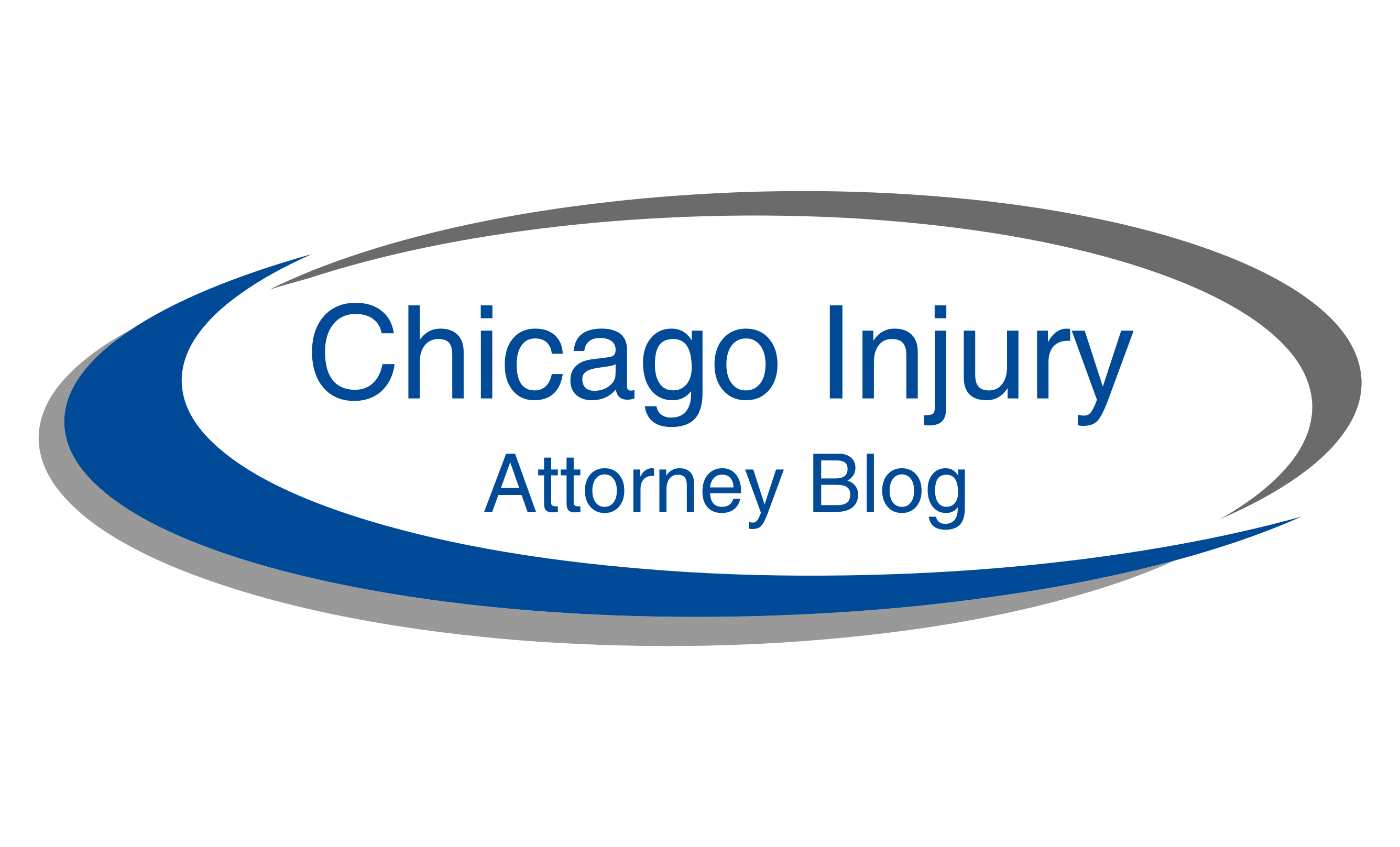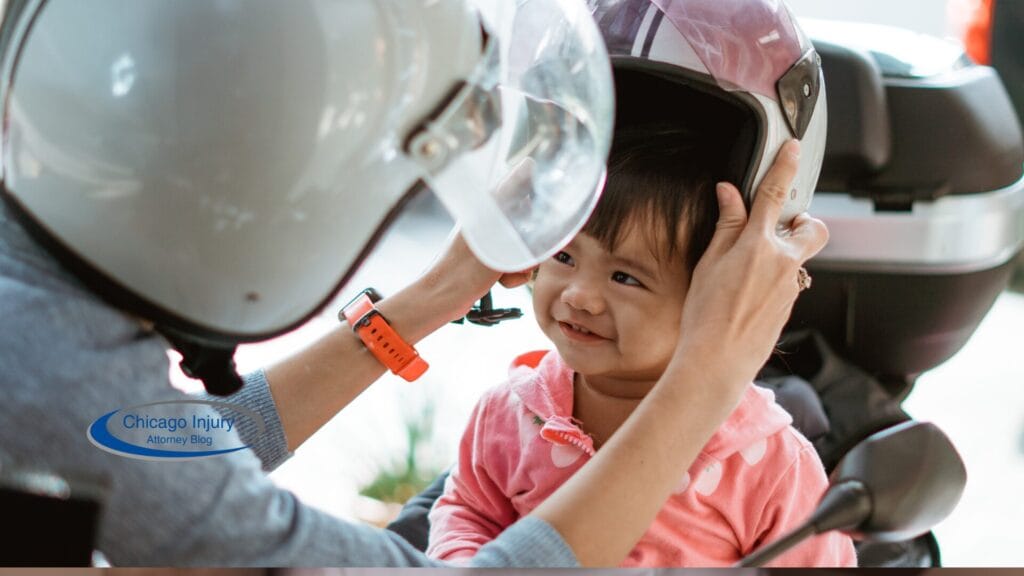Motorcycle riding can provide an exhilarating experience; however, when children are involved, it is crucial to comprehend the specific laws and safety measures established in Illinois.
This entails determining the legal age for motorcycle passengers and identifying the requisite protective gear.
This discussion will examine the associated risks, legal implications, and safer alternatives for traveling with children.
Staying informed is essential to ensure that rides remain memorable while prioritizing the safety of all participants.
Motorcycle Laws in Illinois
Motorcycle laws in Illinois are established to enhance the safety of all riders and passengers. These regulations include specific age requirements for passengers, mandatory helmet usage, and essential safety gear necessary for a secure riding experience.
As a distinguished attorney in Chicago specializing in personal injury cases, I recognize that awareness of these laws not only protects motorcyclists but also markedly diminishes the risks of accidents that can result in severe injuries, including spinal cord injuries and traumatic brain damage.
It is crucial for both seasoned riders and parents of young motorcycle passengers to be well-informed about these regulations, which can vary significantly across states such as Texas, Michigan, and California.
What is the Legal Age for Motorcycle Passengers in Illinois?
In Illinois, the legal age for motorcycle passengers is established to ensure the safety and protection of young riders, reflecting the state’s commitment to maintaining high safety standards for all individuals on the road.
According to regulations set forth by the Secretary of State, passengers must be at least 8 years old and are required to wear a properly fitted helmet for enhanced safety. It is imperative for parents to familiarize themselves with these safety guidelines prior to permitting their children to ride as passengers.
Enrolling in a motorcycle safety course can provide both riders and passengers with essential knowledge regarding safe practices, thereby reinforcing the importance of protective gear and responsible riding behavior.
By adhering to these regulations and guidelines, families can foster a safer riding experience for all parties involved.
Are There Any Exceptions to the Law?
Illinois enforces stringent regulations regarding the legal age for motorcycle passengers; however, specific exceptions may be applicable in certain circumstances. These exceptions are designed to enhance safety while accommodating responsible riding practices.
For example, riders possessing a valid motorcycle operator’s license are permitted to carry a passenger under the age of 18, provided that the passenger is the child, stepchild, or ward of the operator. Additionally, motorcycle regulations mandate that all passengers must wear appropriate safety gear, which includes a Department of Transportation-approved helmet, to promote safety management on the road.
It is crucial for both the operator and the passenger to maintain proper posture and grip to ensure a secure riding experience. Moreover, safety courses are highly recommended, as they offer essential training for riding as a passenger. These courses emphasize the importance of understanding the motorcycle’s dynamics and the necessity for effective communication between the rider and passenger.
Safety Measures for Children Riding on Motorcycles
The prioritization of safety measures for children riding on motorcycles is essential to mitigate the inherent risks associated with motorcycle travel. It is imperative that young passengers wear suitable protective gear and that parents maintain vigilance regarding their safety during every ride.
As a dedicated personal injury attorney in Chicago, I advocate for the enforcement of stringent safety precautions that can substantially reduce the likelihood of accidents and injuries, particularly in high-traffic areas of Illinois.
It is crucial for parents to understand and adhere to motorcycle safety standards when permitting their children to engage in this exhilarating activity.
What Protective Gear Should a Child Wear?
When children ride motorcycles, the use of appropriate protective gear is imperative for their safety, particularly emphasizing helmets, padded jackets, and reinforced pants to mitigate the risk of injuries in the event of an accident.
These items not only provide essential protection against abrasions and impacts but also enhance the overall riding experience by promoting comfort and confidence. A properly fitted helmet is essential, as it protects the head—a critical area susceptible to severe injuries during falls. Padded jackets, often equipped with impact-resistant inserts, cushion the body against unexpected jolts while significantly reducing the risk of road rash.
Similarly, reinforced pants are constructed from durable fabric designed to withstand abrasion, and when combined with knee and elbow pads, they create a comprehensive defense system. Adhering to established safety recommendations ensures that children not only meet safety standards but also remain stylish, thereby significantly reducing the likelihood of serious injuries on the road.
What Should a Parent or Guardian Consider Before Allowing a Child to Ride?
Before permitting a child to ride on a motorcycle, parents and guardians must carefully assess several critical factors, including the child’s age, maturity, and the level of supervision necessary to ensure a safe and enjoyable experience.
Along with these considerations, it is essential to evaluate the child’s experience with motorcycles. Enrolling the child in a motorcycle safety course can provide vital skills and knowledge, significantly reducing the risk of accidents.
“`html
Parents should also familiarize themselves with local legal requirements, as these may dictate age limits or specifications for safety gear. For more information on age limits, you can refer to what age can a child ride on the back of a motorcycle. Consistent supervision is crucial, as it allows for immediate intervention in potentially hazardous situations.
“`
Ultimately, prioritizing safety precautions is essential to fostering a responsible and cautious riding environment for young enthusiasts.
What Are the Risks of Having a Child Passenger on a Motorcycle?
Transporting a child as a passenger on a motorcycle presents considerable risks, including an increased likelihood of serious injuries in the event of an accident. It is imperative for parents to be fully informed about these dangers and the necessary precautions to ensure the safety of their children while riding.
Statistics on Motorcycle Accidents Involving Children
Statistics indicate that motorcycle accidents involving children can result in severe outcomes, with a significant percentage of injuries and fatalities underscoring the urgent need for enhanced safety measures and increased awareness among parents and guardians.
Recent studies reveal that approximately 3,000 children sustain injuries in motorcycle accidents each year, with a considerable portion leading to life-altering consequences. These figures serve as a stark reminder that accident prevention extends beyond simply wearing helmets; it encompasses a broader scope of motorcycle safety education for young riders.
Parents must acknowledge the gravity of these statistics in order to make informed decisions that ensure their children are equipped not only with protective gear but also with comprehensive training in safe riding practices. By prioritizing education and vigilance, families can contribute to mitigating risks and fostering safer environments for young motorcycle enthusiasts.
Common Injuries Sustained by Children in Motorcycle Accidents
Children involved in motorcycle accidents frequently sustain common injuries, such as abrasions and fractures, as well as more severe traumas, including spinal cord injuries and traumatic brain damage. This reality underscores the critical necessity for protective measures.
To mitigate these risks, the utilization of appropriate safety gear is essential, including helmets, knee pads, and reinforced jackets. Parents should be thoroughly acquainted with local motorcycle regulations established to enhance the safety of young riders, ensuring that their children understand the importance of adhering to these rules.
In the unfortunate event that a child is injured, seeking compensation for injuries can significantly alleviate the financial burden associated with medical treatments and ongoing care. By prioritizing safety and suitable training, families can take proactive measures to protect their young riders from potential harm.
Legal Implications for Allowing a Child to Ride on a Motorcycle
Understanding the legal implications of permitting a child to ride on a motorcycle is essential for parents. Negligence or failure to comply with safety regulations may result in liability for injuries sustained during an accident, potentially leading to legal repercussions and compensation claims.
Can a Parent or Guardian Be Held Liable for Injuries to a Child Passenger?
In instances where a child passenger sustains injuries while riding on a motorcycle, parents or guardians may potentially be held liable, depending on factors such as compliance with safety guidelines and the specific circumstances surrounding the accident.
Legal precedents indicate that adherence to established safety precautions, including the use of appropriate helmets and properly fitted protective gear, is instrumental in determining liability. Should a parent or guardian fail to implement these safety measures, they may face personal injury claims based on negligence. This underscores the importance of comprehending not only local traffic laws but also the manufacturer’s safety standards for motorcycle riding.
In such cases, seeking legal consultation is essential for effectively navigating the complexities of liability, as the nature and extent of the injuries sustained can significantly influence any subsequent legal actions.
What Are the Consequences for Violating the Motorcycle Passenger Law?
Violating the motorcycle passenger law in Illinois can result in serious consequences, including fines, points added to the driver’s license, and increased liability in the event of an accident. This underscores the importance of understanding these regulations.
Failure to comply with these traffic laws not only exposes the rider to substantial legal repercussions but also raises significant safety management concerns for both the operator and the passenger. Legal penalties may intensify with repeated offenses, potentially leading to harsher fines or even suspension of the driver’s license. In case of an accident resulting from non-compliance, the individual may face severe repercussions, such as lawsuits and heightened insurance premiums due to perceived negligence.
Comprehending and adhering to the motorcycle passenger laws is essential for ensuring safe travel and avoiding unnecessary legal complications.
Alternatives to Riding with Children on a Motorcycle
For parents seeking safer alternatives to riding with children on a motorcycle, there are various options available that prioritize safety while also offering enjoyable experiences for families. These alternatives aim to mitigate the risks associated with motorcycle riding.
What Are Some Safer Options for Traveling with Children?
When considering travel options for families with children, utilizing family vehicles equipped with safety harnesses and passenger footrests presents a more secure alternative to motorcycle rides.
Public transportation, such as buses and trains, provides ample space for families and often includes designated seating that enhances child safety. These transportation alternatives generally comply with strict safety regulations, ensuring that children are adequately protected while traveling.
In contrast to the inconsistent motorcycle regulations that vary by region, cars and buses offer predictable safety features specifically designed for young passengers.
This transition to safer transportation methods not only reduces the risks associated with motorcycle riding but also affords parents peace of mind, knowing their children are well-protected during their travels.
How Can Parents and Guardians Help Spread Awareness of Motorcycle Safety?
Parents and guardians play a crucial role in raising awareness about motorcycle safety by utilizing educational resources and engaging with the community to promote safe riding practices and protect young passengers.
By actively participating in community events, parents can foster a culture of safety that resonates with riders across all age groups. Organizing workshops that emphasize the importance of motorcycle safety courses can provide valuable insights and firsthand experiences for both novice and experienced riders.
The dissemination of resources, such as safety pamphlets or online courses, not only serves to educate individuals but also instills a sense of responsibility within the community. Advocating for safer riding practices—whether through social media campaigns or local gatherings—enhances community awareness and encourages all individuals to prioritize safety on the roads.
Ultimately, these proactive measures give the power to families to create a safer environment for all motorcycle enthusiasts.
Frequently Asked Questions
What age can a child ride on the back of a motorcycle in Illinois?
According to Illinois state law, a child must be at least 8 years old to ride on the back of a motorcycle.
Are there any exceptions to the minimum age requirement for riding on the back of a motorcycle in Illinois?
Yes, there are exceptions for children under 8 years old to ride on the back of a motorcycle, but they must be in a proper child safety seat and wear a helmet.
What precautions should be taken when allowing a child to ride on the back of a motorcycle?
It is recommended to have the child wear a helmet, use a child safety seat, and have the proper protective gear for their size. The driver should also be experienced and follow all traffic laws.
Can a child ride on the back of a motorcycle with a learner’s permit?
No, according to Illinois state law, a child must have a regular driver’s license to ride on the back of a motorcycle.
What happens if a child under 8 years old is caught riding on the back of a motorcycle without a child safety seat and helmet?
The driver of the motorcycle may face fines and penalties for violating Illinois state law. The child’s safety may also be at risk without proper safety measures in place.
Can a child under 8 years old ride on the back of a motorcycle in neighboring states?
It is important to check the laws of each state before allowing a child to ride on the back of a motorcycle. Some states may have different minimum age requirements or exceptions.





